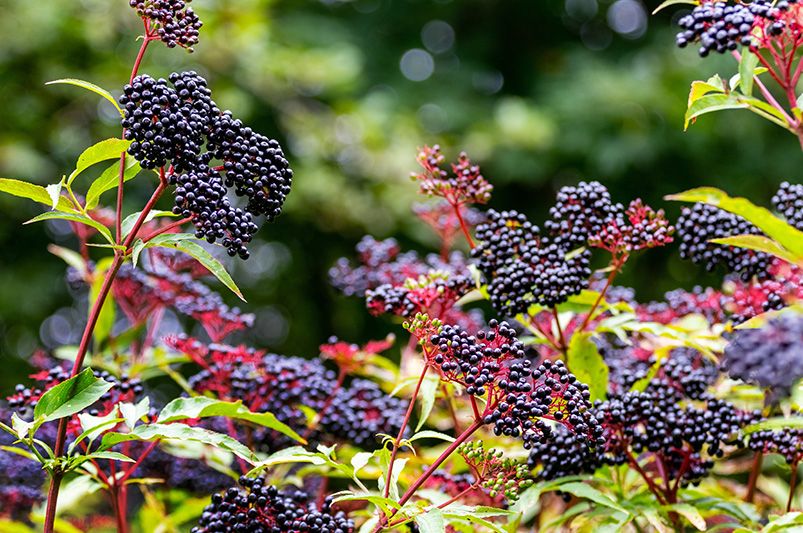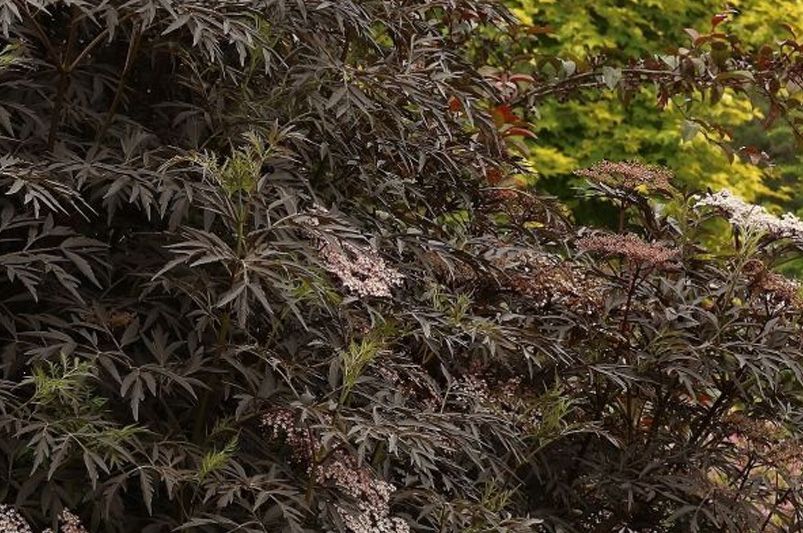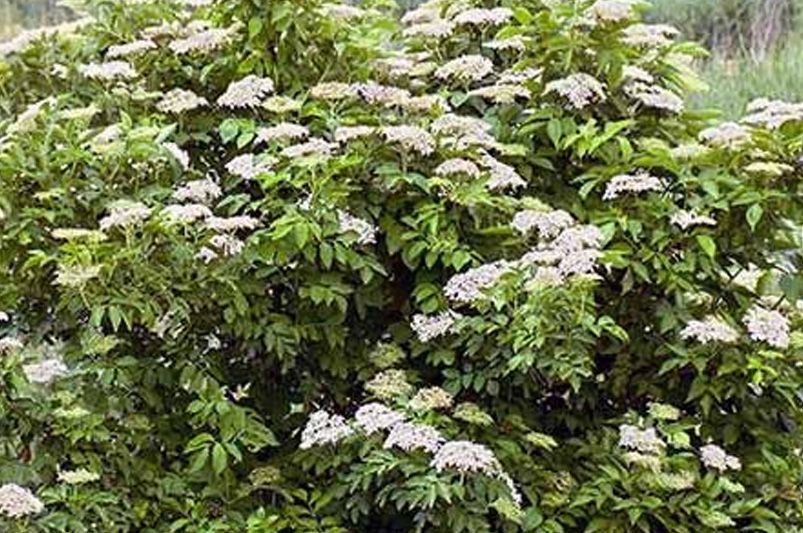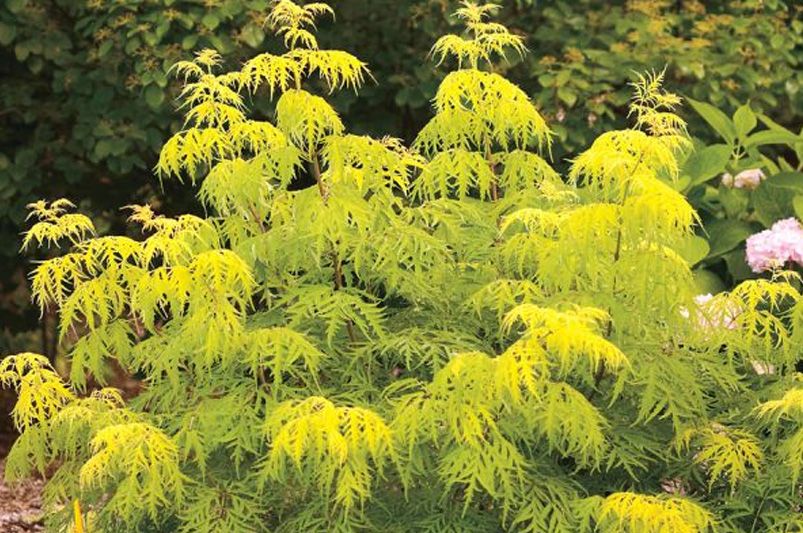
Landscaping with Elderberry Bushes: A Guide to Vibrant Bushes & Luscious Berries
Published: 31/05/2024 | Updated: 31/05/2024
The stunning natural shrub known as American Elderberry, or Sambucus canadensis, grows wild in many parts of the United States, particularly in hardiness zones 3 to 9. Not to be confused with the European elderberry, American Elderberry bushes are native to the area, so they are quite simple to grow and the birds there adore the berries. If you enjoy watching birds, planting this shrub will attract a variety of stunning wild birds to your yard and while they can be cultivated as potted plants if you have the space, they grow best in environments that are close to their natural habitat. Here's how to cultivate the greatest elderberry bushes to liven up your landscape and add some colour!


This is the perfect time to grow elderberry bushes if you haven't already!
Elderberries can be eaten, but if they're not quite ripe, they can be poisonous. When consumed raw, they have a rather harsh flavor and could cause stomach pain. But when you prepare them, they become extremely tasty and completely safe! Create syrups with elderberries for pancakes or fancy mimosas; bake them into pies and pastries; or, for a more traditional approach, preserve them in jams and jellies.
Growing Conditions
The ideal conditions for elderberries are full sun or light shade. Even though it enjoys areas where the climate keeps the soil moist, it can withstand droughts and doesn't require much additional watering if we have some substantial rainfall. Its shallow roots mean that the elderberry plant does on average require around an inch of water every week, so give it a thorough watering if there is a prolonged dry spell. Make sure there is plenty of new compost in the soil and that it drains effectively. This will help keep moisture from collecting, which can lead to root rot.
Apply a granular fertilizer with a gradual release once a spring to your shrub. Fertiliser with high nitrogen works best for new plants; balanced fertilizer works well for established plants. And because they are self-fertile, you can propagate them pretty easily using only one plant.
Pruning
We suggest severe trimming in the spring for a well-balanced, rich, beautiful shrub that yields an abundance of delicious berries. After planting, you won't need to prune it for the first two years, but by year three, you should consider pruning to be a regular annual chore. By the third year, you should trim back the three-year-old canes as elderberries bear their best fruit on two-year-old canes. You will see new, robust growth on your shrub, and it will produce a lot more berries!
Harvest
Usually, this shrub starts to produce fruit in the middle of August or early September. Up to 12 to 15 pounds of fruit can be produced by a fully-grown shrub! It takes elderberry clusters 5 to 15 days to fully ripen; when they start to take on a rich purple hue, they are ready. Harvesting them is simplest if you use shears to cut off the complete berry cluster and then hand-pick the berries.
Control of Pests and Diseases
Although elderberries are typically thought to be pest-resistant, there are a few things to watch out for when cultivating them. The following list of potential pests and illnesses includes their appearances as well as what to do if you come across them:
Powdery Mildew: If leaves are left wet with inadequate air circulation, a white, powdery covering will develop on them. It can be prevented from spreading by using a fungicide based on copper, and the badly damaged sections can be removed and destroyed.
Verticillium Wilt: This disease may be the cause of your yellowing leaves, wilting of new canes, and sluggish growth. Sadly, there is no cure for this virus; crop rotation is your only defense. If you notice verticillium wilt on your elderberry, you should remove the plant.
Which Elderberry Bush is Right For Your Yard?
With so many elderberry varieties out there, we've sifted through the options and rounded up a collection of our top picks. These are the ones that caught our eye for their stunning looks, productivity, and ability to thrive in various conditions.

Black Lace Elderberry
The cold hardy wild elderberry aka the sambucus nigra, is an exquisite complement to any landscape. Robust purple-black leaves with a lace-like texture impart a Japanese maple-like appearance. Because Black Lace is so resilient and versatile, some designers are utilizing it in place of more delicate plants. If an appropriate pollinator is planted nearby, the early summer pink blooms give place to blackberries, creating a striking contrast with the dark leaves. Awards: Royal Boskoop Horticulture Society Silver Medal. Leading reasons to plant Black Lace elderberries include: - distinctive lacy black foliage that sets it apart from other landscape elements; - elegant pink blossoms in early summer that contrast beautifully with the black foliage; - a robust and adaptable plant that thrives in a variety of difficult situations.

Adams Elderberry
A lovely fruit-bearing and attractive bush that reaches a height of 6-7 feet. Has beautiful fall foliage, is hardy and productive, and tolerates damp areas well. Berries work well in pies, jams, drinks, and liquids. Elderberry juice is a fantastic winter tonic and the finest remedy for colds and flu! These plants are delivered as rooted cuttings; the green stem, if any, should be placed above ground and the remaining portion should be buried slightly below. Space plants 4–6 feet apart. Plant multiple varieties to guarantee pollination and an abundance of fruit.

Lemony Lace Elderberry
A cheerful, fashionable plant with a relaxed disposition. Ever wished that brilliant bright yellow was available for our beloved Black Lace elderberry? We are glad to comply: Finely divided leaves with a vibrant gold hue are what Lemony Lace gives to bring life to your environment. Large clusters of white flowers are produced by this native to North America in the early spring before the leaves appear, which are subsequently replaced by vibrant yellow leaves with crimson edges. The leaf turns a lovely chartreuse as it ages. Despite its size, you can trim it to keep it smaller if you'd like.

York Elderberry
Elderberry fruit is delicious so why not add some flavor to your garden with the sweet berry harvest of this elderberry shrub? These plants have beautiful white blossoms in the spring and an abundance of soft, dark purple berries in the summer that may be cooked or used to make delectable vitamin C-rich wines, jams, and jellies. Berries mature later than their Nova counterpart. Once established, easy-to-grow plants may withstand both wet and dry soils. Fruit grown in partial shade is unaffected. For constant fruit quality, summer watering is required regularly. Furthermore, shrubs are excellent wildlife attractors. tolerant of cold. ripens in August. Any other variety of elderberry is the best pollinator.
Elderberries: A Win-Win for Gardeners and Wildlife Enthusiasts
Delving into the world of elderberry bushes promises not just a beautiful addition to your landscape, but also a delectable harvest and wildlife attraction. With varieties like Black Lace, Adams, Lemony Lace, and York, there's a perfect elderberry bush for every garden. Ready to enhance your outdoor space with these versatile shrubs? Purchase your elderberry bushes today and tap into the expertise of ShrubHub's landscape specialists for tailored advice on cultivation, maintenance, and maximizing your harvest.


